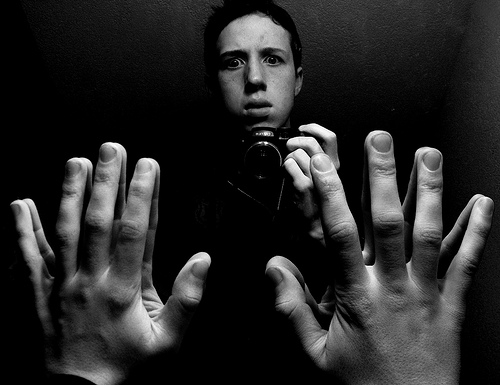The Enemy Within – 8 Tips to Crafting Powerful Inner Conflict
Good fiction is packed full of conflict. While most writers focus on the tension and excitement that plays out in the action unfolding, often the inner landscape of the characters is ignored. Yet, few conflicts are as engaging as the one that is revealed within a character’s own psyche.
The notion of a character being his own worst enemy can add layers of complexity and richness to your story’s scenes, creating opportunities for profound character development and reader empathy.
We can all relate—at one time or another, we’ve been our own worst enemy. Whether it’s a fight over giving in to eat that piece of chocolate cake while on a diet or failing to keep our mouth shut and saying something hurtful to a friend that destroys a relationship, we have all been there. Our characters should “go there” too.
Conflict is the driving force that propels a narrative forward. It serves as the crucible in which characters are tested, revealing their true essence and potential for growth. While external conflicts, such as clashes with adversaries or battles against the elements, are a given with a solid plot, it’s the internal conflicts that often define the heart and soul of a character’s journey and are often missing from the pages.
Inner conflict is more than mere confusion or hesitation; it’s an interior war, a clash of desires and beliefs that are often at odds with each other. It’s the deliberate, conscious choices a character makes, often knowing full well the stakes, risks, and consequences.
Inner conflict, when masterfully woven into the narrative, transforms characters from one-dimensional personas into deeply relatable individuals with a rich tapestry of emotions, vulnerabilities, and complexities.
Questions to Explore Inner Conflict
Asking these eight questions will help you fashion deep inner conflict in your story that is meaningful and riveting:
- What drives the character’s inner conflict?
Begin by unraveling the core motivations that fuel the character’s internal struggle. Is it a past trauma, a deeply ingrained belief, or an unresolved issue from their history? Be sure that whatever past “wound” you give your character that it works well with your premise. Whatever goal your character pursues, the wound they have to struggle with should create complications and setbacks, requiring them to have to face down these demons in order to push toward the goal.
- What are the character’s most significant flaws and insecurities?
Dive into the character’s psychological makeup. Identify their vulnerabilities, weaknesses, and the aspects of themselves they are most reluctant to confront. Think of one “fatal flaw” that plagues your character and causes problems at important moments in the plot. Think how a specific insecurity (due to the past “wound”) can create roadblocks that keep her from making progress. She might have difficulty forgiving others. Or trusting men. Whatever you choose, make it consequential.
- How do these inner conflicts manifest in the character’s actions and decisions?
Examine the outward manifestations of the character’s inner turmoil. How do their inner demons influence the choices they make and the paths they take? Think of at least one very bad decision your character can make because of this inner struggle and insecurity related to it. Or come up with a specific behavior that she can’t seem to change that is always getting in her way and alienating others. You have endless choices to pick from, but aim to avoid stereotyping.
- Are there specific triggers or catalysts that exacerbate the character’s inner conflict?
Explore the events or situations that act as catalysts, intensifying the character’s internal struggles. What external factors push them to confront their inner demons? Think about that one key flaw your character struggles with, then come up with something that triggers it. Remember Marty in the Back to the Future series? All it took was for someone to call him “Chicken” to set him off.
- Does the character exhibit self-sabotaging behavior?
Can you come up with a reaction or habit due to inner conflict that is a form of self-sabotage? Your character can undermine his own goals, relationships, or happiness due to the things he’s struggling with internally.
- How does the character’s inner conflict affect their relationships with others?
This is perhaps the most important question, as the inner conflicts should have real-world consequences (as they always do!). Examine the impact of the character’s inner turmoil on their interactions with other characters. Do they push loved ones away, create confrontations or withdraw, or struggle to connect? What are they afraid others might think or learn about them, and how does this fear manifest in their relationships?
- Is there a turning point or a moment of reckoning for the character’s inner conflict?
Try to come up with a pivotal moment in which the character is forced to confront his inner demons head-on. How does this moment affect his pursuit of his goal and character arc? It’s usually during the “dark night of the soul” moment before the climax when this reckoning occurs (but there can be other, less-impacting “aha” moments along the way).
- How does the character’s inner conflict resonate with readers on a personal level?
How do you want readers to react the character’s struggles? By making this internal war universal, it prompts readers to reflect on their own inner conflicts. What aspects of the character’s journey can resonate with their own experiences and emotions? That’s where the heart of your story lies.
Showcasing a character who grapples with being his own worst enemy offers readers a mirror in which they can examine their own inner conflicts and vulnerabilities. By mining the depths of a character’s inner turmoil and asking these probing questions, your story will have a profound impact on them that will linger long after they finish reading the last chapter.
Featured Photo by Luis Villasmil on Unsplash












How did you know *exactly* what I needed today? The main conflicts in my story are the internal ones, and they only show their “tip of the iceberg” in interactions between characters. Your post is helping me think about things from angles I wouldn’t have come to on my own.
I’ve been writing for 11 days, it’s my first real project not associated with work or school, and I’m enjoying it much more than I thought I would.
I meant to add: THANK YOU for this blog!
Thanks so much, Tom!
So glad to hear that!